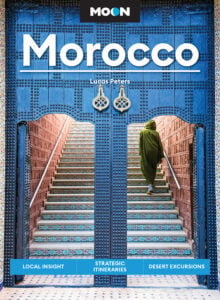 Let it never be said that Moroccans don’t know how to party; one of the best ways to experience this truth first-hand is to attend a wedding. Moroccan weddings are 24-hour affairs, but some can take place over the course of two or even three days. Just as in the west, every wedding is different, and families strive to put a unique or personal spin on the day. All the same, there are a few common themes and events that occur over the course of a wedding, and knowing what to expect if you attend one is important.
Let it never be said that Moroccans don’t know how to party; one of the best ways to experience this truth first-hand is to attend a wedding. Moroccan weddings are 24-hour affairs, but some can take place over the course of two or even three days. Just as in the west, every wedding is different, and families strive to put a unique or personal spin on the day. All the same, there are a few common themes and events that occur over the course of a wedding, and knowing what to expect if you attend one is important.
First, know that there is a very great difference between ‘country’ weddings and ‘city’ weddings. Urban couples are generally a bit wealthier, and their day may include a number of dress changes for the bride; an endless supply of tagine, cakes, and cookies; and even some professional live music. Rural couples generally stick to more traditional ceremonies, though the urban influence is starting to creep in to even the most remote wedding festivities.
When you arrive at a wedding, be prepared to sit and chat. The guests are divided by gender, and men and women sit for hours on end chatting, sipping tea, talking about the happy couple and even breaking into some impromptu songs and dances. It’s all an excellent excuse to set aside normal day-to-day life and kick back with friends and neighbors.
In the evening, the bride and groom will normally arrive to greet the guests (though in some ceremonies, even the bride and groom are kept separate for the majority of the ceremony). The couple is serenaded by their guests with a number of traditional verses and may even be witness to a spontaneous dance party.
After they are declared husband and wife, the couple will usually head upstairs for a little alone time. The guests can snack and drink tea while they wait for dinner to arrive. (Beware, however, that some snacks may be presented on a bed sheet – while it is rarely that bed sheet anymore, it’s best not to snack on anything unwrapped).
Finally, dinner is served. Guests are again split by gender, with the men seated and served first and the women after the men finish. No matter how hungry you may be, however, don’t dig in just yet. The bride and groom must first visit your table and break the bread, at which point you are welcome to eat your fill.
After dinner and dessert, everyone will head outside for a traditional song and dance ceremony. The festivities can go well into the night, but after a few numbers it is perfectly acceptable to call it an evening (especially if you’re on day three!).
If you do have the honor of a wedding invitation, be sure to dress sharply (yet conservatively) and bring a small gift. Even sugar or mint will do, and it will be greatly appreciated on a day when so much is to be used. Most importantly, smile, have fun and cut a rug!
Written by Margaret Jackson.
Photo by kali.ma.









Trackbacks/Pingbacks